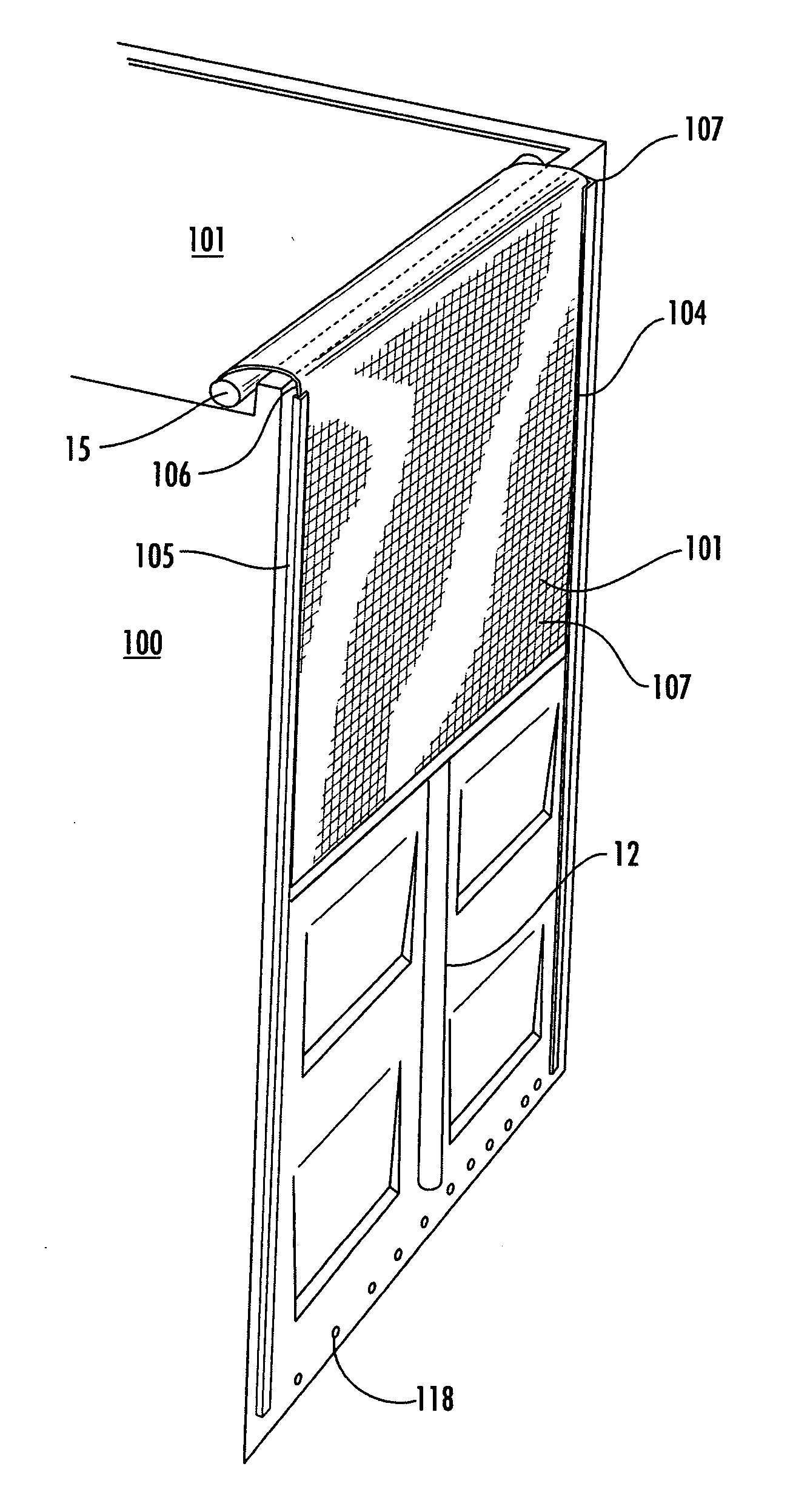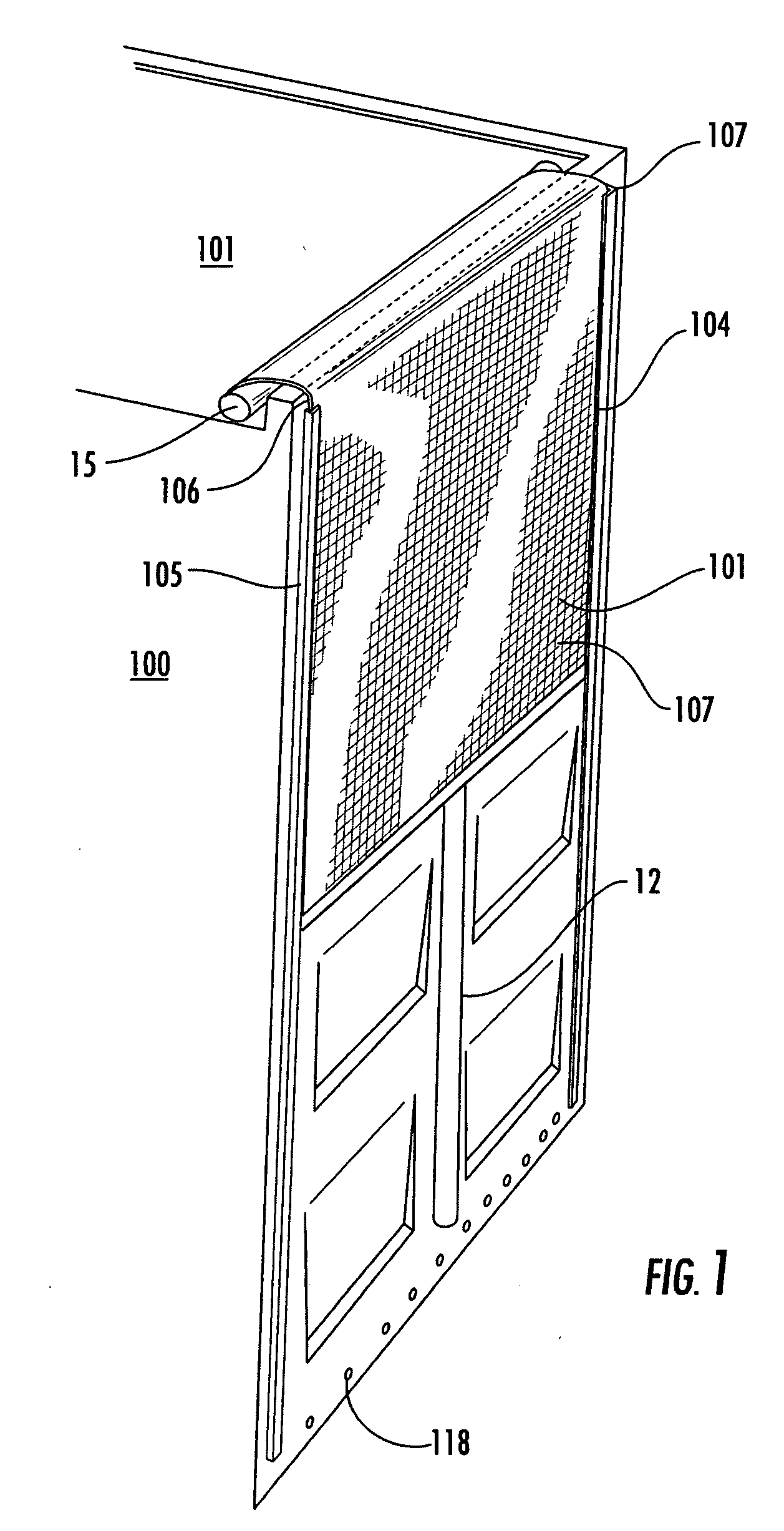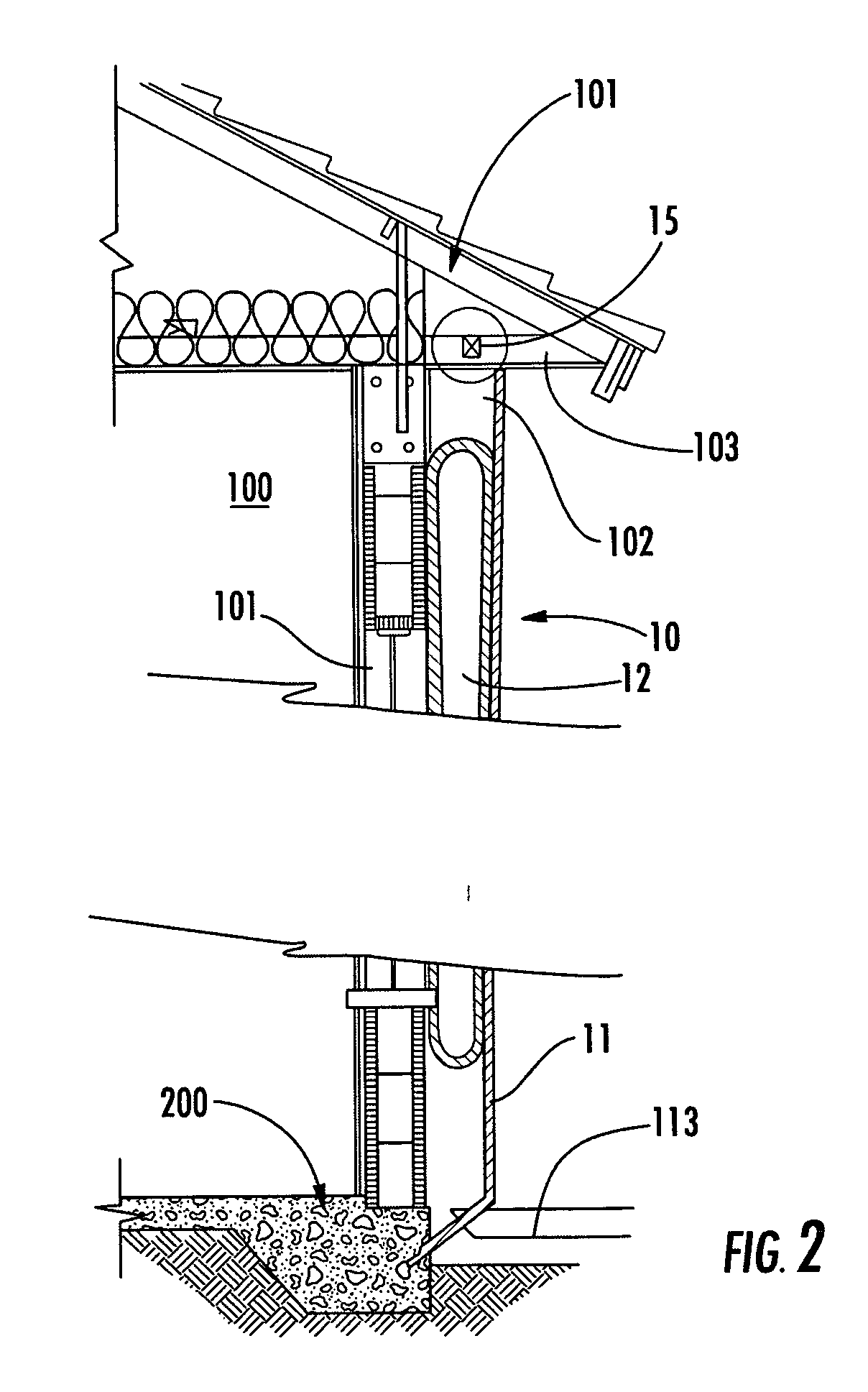Inflatable barrier
a technology of inflatable barriers and barriers, which is applied in the direction of door/window protection devices, curtain suspension devices, shutters/movable grilles, etc., can solve the problems of unsightly and difficult-to-mount reinforcing bars, loud, frightening bangs that disturb the inhabitants being protected, and are typically expensive to purchase. , to achieve the effect of convenient use, light weight and weather tigh
- Summary
- Abstract
- Description
- Claims
- Application Information
AI Technical Summary
Benefits of technology
Problems solved by technology
Method used
Image
Examples
Embodiment Construction
[0043] This barrier 10 is made up of a flexible material 11 that has known qualities of strength, stretch and deformation and is sufficiently strong to withstand applicable impact testing and one or more inflatable plenums or cushions 12. The barrier 10 does not derive its strength from stiffness or rigidity but rather from its bursting strength and stretch, with the latter acting like a spring to gradually decelerate any impacting missile. Wind speed may become a significant factor in larger spans.
[0044] There are many desirable characteristics of this barrier 10, such a resistance to weathering, light weight, ease of installation, deployment and storage, economy. Additionally, there are several methods of deploying and storing this barrier. While this invention is shown in its preferred embodiment as being utilized to protect the windows and overhang roof, shown in FIG. 2, of a structure, it is to be understood that this item has utility for other items requiring protection and i...
PUM
 Login to View More
Login to View More Abstract
Description
Claims
Application Information
 Login to View More
Login to View More - R&D
- Intellectual Property
- Life Sciences
- Materials
- Tech Scout
- Unparalleled Data Quality
- Higher Quality Content
- 60% Fewer Hallucinations
Browse by: Latest US Patents, China's latest patents, Technical Efficacy Thesaurus, Application Domain, Technology Topic, Popular Technical Reports.
© 2025 PatSnap. All rights reserved.Legal|Privacy policy|Modern Slavery Act Transparency Statement|Sitemap|About US| Contact US: help@patsnap.com



